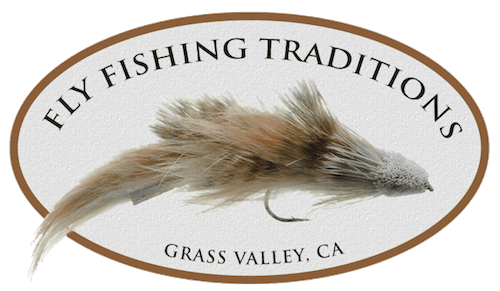I’m doing a series of articles talking about useful techniques for fishing the Lower Yuba River and really for anywhere your fishing passions take you. This one is about nymphing a run or a riffle corner.
On the Lower Yuba River you will find many runs that are prime targets for holding fish. These are portions of the river that flow with an even depth from 4 to 8 feet deep. You will also encounter riffle corners at the base of a riffle. This is a v-shaped slot that if you’re looking up stream you will see the soft spot right at the top of the vee. This spot and the soft water downstream of it are one of the prime spots for fish to hold and feed as the nymphs get pushed down the riffles and into these soft side waters. This is especially true if there have been hatches in the days prior.
The first rule when fishing a run or a riffle corner is not to step into the water, before you have “cleared it”. You must fish the runs and riffle corners from the bank or you’ll likely be stepping on fish. You what to use the “Borger Shotgun Method” and thoroughly cover the water before you step into it.
So, let’s go through how to do it
(1) First off you want to envision lines running parallel to the current running downstream about 1 to 1 1/2 foot apart.
(2) These are the lines you’ll be running your flies and indicator through.
(3) Set your indicator to roughly 1 1/4 times the depth of the water you’ll be fishing and make sure you have enough shot on. More than you think.
(4) Feed out line directly below you the distance that you want to cast upstream.
(5) Once the line is out, point your rod tip at the indicator downstream.
(6) Set up your footing so you are facing partially upstream.
(7) With a smooth deliberate motion, pick the line up and follow through upstream and point your thumb at the target area.
(8) The flies, shot and indicator hit the water up stream and your ready to start fishing.
(9) Raise your rod tip as the indicator and flies start downstream (High Stick) keeping most of the line off the water.
(10) As the indicator floats downstream, and then floats just past you position, mend the line upstream of the indicator and then lower the rod tip as they move downstream.
(11) Once they are at the end of the drift let the indicator and flies swing directly below you and then do it all over again but place your cast 1 to 1 1/2 feet further out (on the next line).
You repeat this until you’ve reached all the water in front of you where you think might hold fish. Once you’ve fishing 15 feet or so out from the bank you can carefully and stealth fully start wading in to enable placing your casts further out. Most of the water close to you can be fished with a fixed amount of line. As you fish further out you will need to keep mending, possibly stack mending and using good line management techniques to keep your rigg dead drifting correctly.
Summary
This is the basic nymphing technique that you can employ wherever you roam. Once you add mending skills and line handling skills you will have all the basics down and you will have then be a successful nympher!
